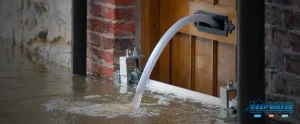A fire marshal inspection assesses the potential fire hazards in a given establishment. Various organizations can use this inspection to rectify identified fire hazards and comply with local fire codes. Non-compliance or failure to mitigate the possible effects of these hazards can put lives and properties at risk and result in business suspensions and shutdowns.
The Fire Marshal
Appointed by the local municipality fire chief, one of a fire marshal’s primary duties is to enforce fire codes by doing inspections of business establishments. They would then inform fire departments of their findings so responders would know what to do. A fire marshal inspection helps businesses prevent and mitigate fire incidences.
According to the National Association of State Fire Marshals, fire marshals are also responsible for investigating and reporting fire and arson cases and educating the public about fire safety protection. They are also tasked with providing firefighter training and responding to fire incidents involving hazardous materials (HAZMAT).
How to Get a Fire Marshal Inspection
Fire inspection requests can vary from one city to another and even from one state to the next. The type, frequency, and procedure of the inspection will also differ, depending on the location of your business. Thus, it would be best if you familiarized yourself with the fire requirements of your jurisdiction, which you can usually find on the website of your local fire department.
Also, you must have a solid understanding of the fire codes in your area. The inspection will usually focus on helping your business get up to code. If you are aware, for example, that your fire alarm is not working, you can resolve the issue before the inspector arrives and charge you with the corresponding fines.
How Often Is a Fire Inspection Required?
Small businesses can expect a visit annually from the local fire marshal’s office. Newly constructed, renovated, or repurposed buildings are usually exempted. On the other hand, hospitality, entertainment, and health care industries could be subject to more frequent inspections.
During the inspection, giving fire marshals a checklist containing all the relevant information about your facility or building is a good idea. It will help speed up the inspection process and ensure that all areas are properly inspected. The fire marshal inspection checklist should include all rooms, exit signs, locking devices, fire escapes, corridors, stairs, etc.
Areas a Fire Marshal Inspection Will Check
Fire marshal inspections are part of any business’s everyday life, whether it’s a family-owned restaurant or a large-scale industrial facility. Below are the areas you should double-check to ensure that an inspection does not trigger an alarm or raise a red flag.
1. Pathway
The site should have clear hallways and paths to allow for exits from doors and windows. The pathways, including fire escapes, and corridors, should be at least 36 inches wide, clearly marked with emergency lights, and must not be blocked, shut out, or wedged open. In emergency cases, multiple exit points that customers, staff, and other personnel can use are also preferred.
It is likewise important that emergency pathway lights are functional and have enough battery power to operate for at least 90 minutes in case of power failure.
2. Identity
The name of the business and the street address must be clearly visible when viewed from the outside. It will allow emergency services personnel to locate the area when help is needed easily.
It is also important that you have a clear and comprehensive evacuation plan that people in your organization can refer to in case a disaster strikes. This should be posted in strategic areas of the building.
3. Electrical Systems
All sockets should not be overloaded, while electrical panels and breaker boxes should be clear of obstructions. Defective or burned-out bulbs should be replaced immediately, even as adapters and extension cords should be of the correct model and make.
4. Control Panels
The fire alarm panel should be fully functional and professionally inspected in compliance with existing fire codes. It is also a good idea to keep inspection tags and other documentation that confirms the services and tests performed during the previous year. A fire marshal could ask for these during the fire marshal inspection.
5. Suppression Systems
Your business must have enough resources to handle an emergency until help arrives. The water supply in the area must be adequate to ensure that the fire sprinklers will work. In this regard, there should be at least an 18-inch clearance around the sprinkler heads in compliance with NFPA order 25.
Other suppression resources like fire extinguishers should be fully charged and completely functioning. They should be free of debris and regularly maintained by a qualified professional. A fire marshal inspection usually concentrates on the suppression systems because these are the critical components of a fire safety plan.
Key Takeaway
A fire marshal inspection is an annual requirement that business owners must comply with. The aim is to ensure that the place where they run their daily operations is structurally safe and has the needed resources to handle a disaster like a fire.
Although the fire marshal inspection requirements tend to vary from one locality to another, the things that a fire marshal will usually check involve the electrical and water supply, pathways, access and exit areas. These are critical elements and failure to meet the standards can mean business suspension. If an organization continues its operations despite the violation, it can expose its people to dangers like fire and its accompanying risks, for which mitigation works may have to be consequently considered.
Contact Deep Water Emergency Services and Mitigation for any fire damage concern.
If you’re a victim of fire damage due to problems with your business’s electrical supply, we at Deep Water Emergency Services and Mitigation can help you get back on your feet.
We have a fire damage mitigation Denver, CO, expert who will take a look at the site, assess the damage, and offer you our best mitigation plan. Call us now so we can start working for you.






